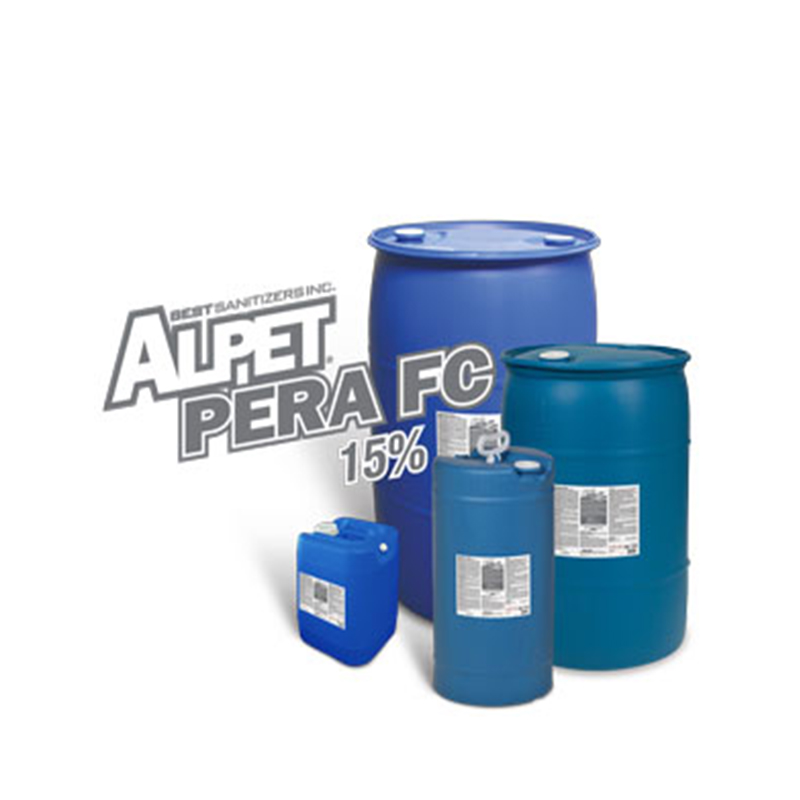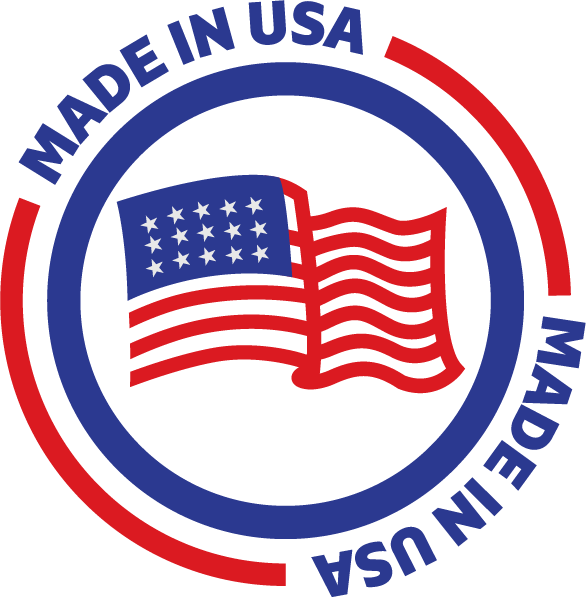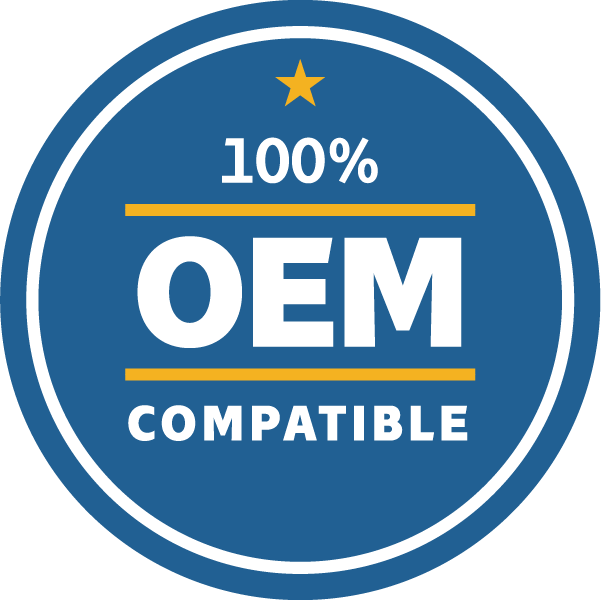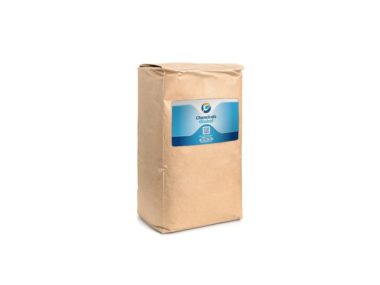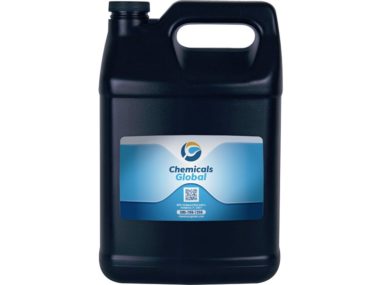Peracetic Acid Food Contact Surface Sanitizer.
|
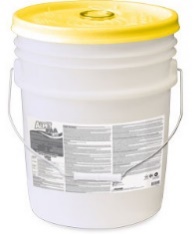 |
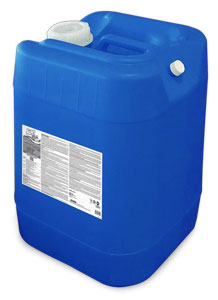 |
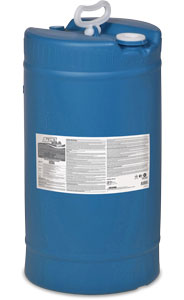 |
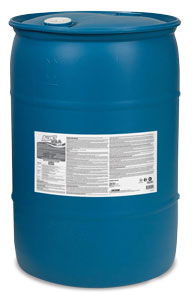 |
||||
| SSPA100 | SSPA101 | SSPA102 | SSPA103 | ||||
| 4.75 Gallons | 4.75 Gallons | 13.9 Gallons | 27.8 Gallons | ||||
Download catalog (300 downloads )
Sanitization
This peroxyacetic acid sanitizer is recommended for use on precleaned surfaces such as equipment, pipelines, tanks, vats, filters, evaporators, pasteurizers, and aseptic equipment in dairies, breweries, wineries, beverage and food processing/packing plants, egg processing/packing equipment surfaces, and eating establishments. This product is effective as a sanitizer when solution is prepared in water of up to 400 ppm hardness as CaCO3. This product has demonstrated greater than 99.999% reduction of organisms after 60 seconds exposure period in the AOAC Germicidal and Detergent Sanitizing Action of Disinfectants study. NOTE: FOR MECHANICAL OPERATIONS prepared use solution may not be reused for sanitizing but may be reused for other purposes such as cleaning. FOR MANUAL OPERATIONS fresh sanitizing solutions must be prepared daily or more often if the solution becomes diluted or soiled.
See product label for directions and recommended dilutions for the following applications:
- Sanitizing Food Contact Surfaces
- Sanitization of Conveyors and Equipment for Meat, Poultry, Seafood, Fruit, Nuts and Vegetables
- Sanitizing of Casing, Shell or Hatching Eggs
- Sanitizing Eating, Drinking and Food Prep Utensils
- Sanitizing Tableware
- Final Sanitizing Bottle Rinse
- Antimicrobial Rinse of Precleaned or New Returnable or Non-Returnable Containers
Foam Cleaning of Food and Non-Food Contact Surfaces:
As an adjunct to cleaning and sanitizing procedures this sanitizer/disinfectant may be added to PERAFOAM™ and foamed on environmental or equipment surfaces using conventional foam-generating equipment. The resultant foam blend can be used on equipment, floors, walls, ceilings, drains, etc., and must be left on surface for a minimum of 1 minute or longer. On food contact surfaces do not exceed 6.1 oz. of this product per 6 gallons of water. Directions for mixing: Manually or mechanically blend 1-6.1 fl. oz. of this product and 6-12 fl. oz. of PERAFOAM (foam additive) per 6 gallons of water. The dilution water must not exceed 150° F. Note: When using a foam additive, PERAFOAM is the only approved product that may be used.
Drain Cleaning and Sanitizing:
For use in open or closed drains such as in food, beverage, dairy, pharma and health care industries. Co-blend this product manually or with a mechanical device at the rate of 4-6 fl. oz. with 1-2 fl. oz per gallon of water of PERAFOAM in a mechanical foaming device and foam drain surfaces thoroughly. Allow product to contact the slime/ biofilm for at least 10 minutes or more. A water rinse is optional. Note: When using a foam additive, PERAFOAM is the only approved product that may be used.
Entryway Sanitizing Systems:
To help prevent cross-contamination from treated area to treated area, apply (spray) a sanitizing foam to the entryway. The foam must cover the entire path of the doorway. For effective coverage of footwear and forklift tires, etc., apply a foam layer 0.5-2 inches in depth. Set the system to deliver 1-6.1 fl. oz. (82-500 ppm active PAA) of this product and 3-12 fl. oz. of PERAFOAM (foam additive) per 6 gallons of water. Adjust the PAA concentration by testing the collapsed foam solution using a peroxyacetic acid test kit. Note: When using a foam additive, PERAFOAM is the only approved product that may be used.
Alkaline Detergent Cleaning Adjunct (Booster) to Clean Food Processing Equipment:
This product is an effective cleaning booster (hypochlorite alternative) for use with alkaline detergents. It may be used as a cleaning additive for Clean-In-Place (CIP) operations involving the circulation cleaning of pipelines, tanks, vessels, evaporators, HTSTs, and other food processing equipment. For cleaning applications as a detergent booster, use 1–6 oz. per gallon of water, to assist in the removal of organic soils. All hard, nonporous food contact surfaces treated with this boosted detergent must be thoroughly rinsed with potable water followed by sanitizing with an approved food contact surface sanitizer (such as this product).
Non-Food Contact Hard Surface Disinfection Combination Disinfection and Cleaning:
This product disinfects as it cleans in one operation. This product can be used to disinfect floors, walls and other hard, nonporous surfaces such as tables, chairs, countertops, bathroom fixtures, sinks, bed frames, shelves, racks, carts, refrigerators, coolers, tile, linoleum, vinyl, glazed porcelain, and use sites on this label made of plastic, stainless steel, or glass. For areas of use in hospitals, use this product for surgical and obstetrical suites, housekeeping services, physical therapy departments, nursing services, autopsy facilities. Also use this product in nursing homes, other health-care facilities, schools, colleges, veterinary clinics, animal life science laboratories, industrial facilities, dietary areas, office buildings, recreational facilities, retail and wholesale establishments. This product is effective against Staphylococcus aureus, Salmonella enterica, Pseudomonas aeruginosa, Trichophyton mentagrophytes and Escherichia coli O157:H7 at 0.38%-3% v/v (2.5-20 oz. per 5 gal) in hard water (400 ppm as CaCO3) and 5% organic soil loading on hard, nonporous surfaces. For heavily soiled areas a pre-cleaning step is required, followed by a potable water rinse. Apply solution with a mop, cloth, sponge, brush, etc., or by soaking or immersion so as to wet all surfaces thoroughly. Allow to remain wet for 10 minutes, then remove solution and entrapped soil with a clean wet mop, cloth, wet vacuum pickup, or by draining. Surfaces that may directly or indirectly contact food must be rinsed with potable water before operations resume. A rinse for non-food contact surfaces is optional. Prepare a fresh solution daily or when it becomes soiled or diluted.
Disinfection of Animal and Poultry Premises, Trucks, Coops and Crates
This product is designed for use in animal hospitals, animal laboratories, kennels, pet shops, zoos, pet animal quarters, poultry premises, poultry hatcheries, and livestock quarters. When used as directed, this product is specifically designed to disinfect, deodorize and clean inanimate, hard surfaces such as walls, floors, sink tops, furniture, operating tables, kennel runs, cages and feeding equipment. In addition this product will deodorize those areas which are generally hard to keep smelling fresh, such as garbage storage areas, empty garbage bins and cans, and any other areas which are prone to odors caused by microorganisms. See product label for directions and recommended dilutions for the following applications:
- Disinfection of Poultry Premises
- Disinfection and Deodorizing of Animal Housing Facilities (Barns, Kennels, Hutches, etc.)
Control of Slime Forming Bacteria In:
See product label for directions and recommended dilutions for the following applications:
- Recirculating and Cooling Water Systems
- Cooling Towers
- Evaporative Condensers
- Pasteurizers and Air Washers
- Reverse Osmosis (Ro)
- Ultra Filtration (Uf)
- Other Membrane Cleaning-Sanitizing
- Batch Sanitation of NF, UF and RO Systems
- RO Continuous or Intermittent Addition
Fruit and Vegetable Water Treatment
This product can be used in water or ice that contacts raw or fresh, post-harvest or further processed fruits and vegetables for the control of spoilage and decay causing bacteria and fungi in commercial operations and packinghouses.
Fogging in Filling, Packaging, and Dispensing Rooms or Areas (Not for use in California)
This product can be applied by fogging to control the growth of non-public health microorganisms that may cause decay and/or spoilage on raw, post-harvest fruits and vegetables during the post-harvest process. 1. Use in secure fruit and vegetable storage system. Vacate all personnel prior to fogging. Post notice of when personnel can re-enter. After application, purge room with fresh air to replace treated air. Ensure room is properly ventilated. Personnel may re-enter 4 hours after system has been properly aired. Ensure there is no strong odor characteristic of vinegar before having personnel return to work area. 2. Fog areas to be treated using 3.0-17.5 fl. oz. of this product into humidified air per 1000 cu. ft. of room volume for a minimum of 4 hours. Inject concentrate into water used for fogging of postharvest fruits and vegetables in storage using any type of fogging equipment including: cold foggers, thermal foggers, low pressure air assisted and high pressure fog systems. Adjust water level accordingly to allow fogging apparatus to fog for a minimum of 4 hours


